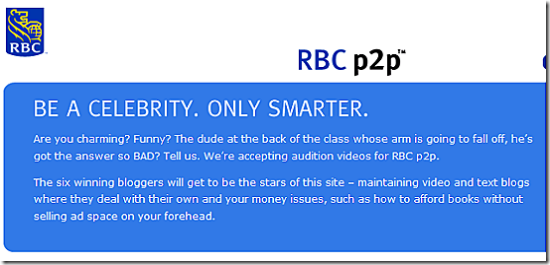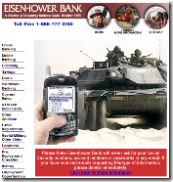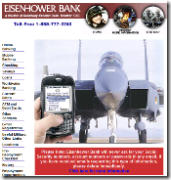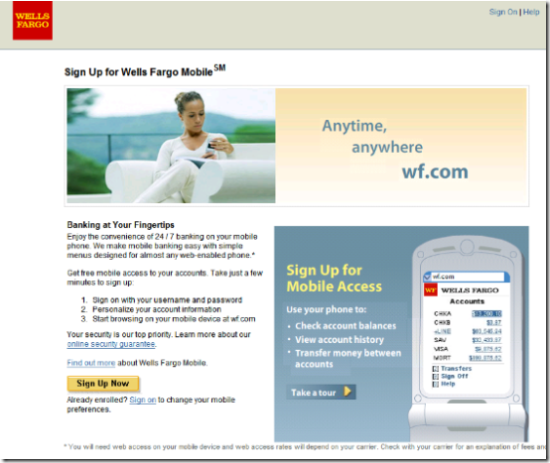I had an interesting conversation with Scott Loftesness, partner at Glenbrook Partners, and the man behind the curtain at the most successful blog in the financial services arena, Payments News, on my fave five list.
We were debating the merits of the various mobile banking models as he updated the mobile section of his Payments Boot Camp material. For the most part, we agree as to how the market is likely to evolve. But one small difference is our outlook for SMS/text services.
In the report I wrote at Online Banking Report in February (here), I predicted that SMS/text services would be an important bridge technology to get us to full browser-like mobile banking interfaces. Scott's not so sure.
 Apparently, the major U.S banks agree with Scott, so far. There has been little activity in this area. Fremont Bank is the only one throwing their support behind this technique (previous post here), partnering with ClairMail (see FINOVATE below), the biggest proponent of this model in the United States.
Apparently, the major U.S banks agree with Scott, so far. There has been little activity in this area. Fremont Bank is the only one throwing their support behind this technique (previous post here), partnering with ClairMail (see FINOVATE below), the biggest proponent of this model in the United States.
Here's the short-term forecast we published Feb. 23, 2007, in our Mobile Banking report (we go out on the limb through 2016 in the full report). The number shown below is U.S. households that have ever used the given mobile technology to access their bank account balance or transactions:
Original 2-Year Mobile Banking Forecast (23 Feb 2007)
2007 2008
SMS banking 400,000 2 million
Mobile website 600,000 1.2 million
One-touch banking (1) 100,000 250,000
Total (2) 900,000 2.5 million
Source: Online Banking Report estimates, +/- 33%, Feb. 23, 2007 (report here); estimates are for Dec. 31 of each year
Notes:
(1) Downloadable banking app, eg. rich user interface
(2) Total is less than the sum, because some households use more than one access method
As you can see, six months ago we expected SMS to be the major driver, especially in 2008 and 2009. However, we are somewhat dubious now. Not because we don't think customers will like it, but because it doesn't look like the big players are planning on supporting it. It's too early to revise our entire model, but based on what we know today, here's how we see the next two years.
Revised 2-Year Mobile Banking Forecast (30 Aug 2007)
2007 2008 2008 Change (from 23 Feb)
SMS banking 50,000 300,000 (1.7 mil)
Mobile website 600,000 1.5 million +250,000
One-touch banking (1) 100,000 350,000 + 100,000
Total (2) 700,000 2.0 million (500,000)
Source: Online Banking Report estimates, +/- 33%, Aug. 30, 2007 (report here); estimates are for Dec. 31 of each year
Why we still like SMS banking
As I was rethinking the forecast, I read Walt Mossberg's column this morning and was reminded why I believe the United States is on the verge of mass-adoption of text-messaging. Mr. Mossberg was extolling the virtues of the new upgraded Yahoo Mail, specifically how it supported text messaging, e.g., users can send a text message to a phone directly from Yahoo Mail on their desktop PC.
Our take: As text-messaging is added to popular desktop email programs, Gmail, Hotmail, and even Outlook, it will make messaging a common activity among the core online banking constituency, the 30-to-55 crowd. As this group warms up to the convenience of text messaging, they will be far more receptive to retrieving basic bank and card-balance data in the same manner.
More important, what do you think? Comments are open. Everyone that leaves a substantive comment on this thread, and emails me their mail address, gets a $5 Starbucks card (note 1).
See the major mobile vendors DEMO their latest at FINOVATE 2007
 ClairMail, along with four other mobile banking platform providers, will be DEMOing their latest solutions at our FINOVATE 2007 conference. The Aug. 31 deadline for early-bird admission is approaching quickly, so reserve a seat now.
ClairMail, along with four other mobile banking platform providers, will be DEMOing their latest solutions at our FINOVATE 2007 conference. The Aug. 31 deadline for early-bird admission is approaching quickly, so reserve a seat now.
Note:
1. Industry participants only.
 As mentioned in Brandon's post earlier today, New Zealand-based
As mentioned in Brandon's post earlier today, New Zealand-based ![]()
![]() BNZ – Mobile Credit Card Payment
BNZ – Mobile Credit Card Payment 

![]() Telecom customers can top up their prepay mobile phone credit, using their everyday bank account, via a simple text message instruction.
Telecom customers can top up their prepay mobile phone credit, using their everyday bank account, via a simple text message instruction. ![]() Westpac – SMS Banking
Westpac – SMS Banking 































